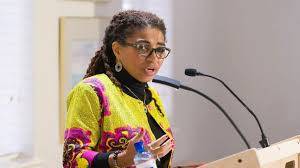**The Real Costs of Free SHS Are Hidden - Prof. Akosua Ampofo**
The Free Senior High School (SHS) program in Ghana, introduced in 2017, has been a landmark policy aimed at providing accessible education to all Ghanaian students. While the initiative has significantly reduced financial barriers to education, Prof. Akosua Adomako Ampofo, a distinguished academic and social commentator, has argued that the program’s “real costs†remain hidden. She highlights how financial, infrastructural, and societal challenges tied to the policy are affecting its long-term sustainability and quality of education.
In a recent discussion, Prof. Ampofo shed light on the unintended consequences of the Free SHS policy, urging policymakers to evaluate its impact comprehensively and make necessary adjustments.
---
### **Accessibility vs. Quality: A Balancing Act**
Prof. Ampofo acknowledges the immense social benefits of the Free SHS program, particularly in increasing school enrollment. Since its introduction, hundreds of thousands of Ghanaian students who might otherwise have been excluded due to financial constraints have gained access to secondary education.
However, this surge in enrollment has strained existing infrastructure and resources. Overcrowded classrooms, inadequate teaching materials, and an overburdened workforce have become widespread issues.
“Providing free education is admirable, but we must ask ourselves: What quality of education are these students receiving?†Prof. Ampofo asked. She emphasized that while access is critical, the long-term value of education lies in its ability to equip students with the skills and knowledge needed for the workforce and societal development.
---
### **Hidden Financial Costs**
While the Free SHS program eliminates tuition fees for students, it has led to increased financial pressure on the government. The program’s funding, which consumes a significant portion of Ghana’s education budget, has left little room for other critical investments in the education sector, such as teacher training, infrastructure development, and curriculum improvement.
Prof. Ampofo pointed out that this reallocation of resources often comes at the expense of other sectors. “We must recognize that when we say education is free, someone is still paying for it. In this case, the government and, ultimately, taxpayers bear the cost,†she said.
Additionally, parents are not entirely free from financial burdens. While tuition and examination fees are covered, other costs, such as uniforms, textbooks, and transportation, remain the responsibility of families. For low-income households, these expenses can still be significant, undermining the policy’s goal of equity.
---
### **Impact on Teachers and Infrastructure**
One of the most glaring consequences of the Free SHS program has been its impact on teachers and school infrastructure.
- **Teacher Shortages**: The policy has led to an influx of students without a corresponding increase in the number of teachers. Many schools are understaffed, forcing educators to take on heavier workloads, which can lead to burnout and reduced teaching quality.
- **Inadequate Infrastructure**: Many schools lack the necessary infrastructure to accommodate the growing student population. Overcrowded classrooms and dormitories are common, creating environments that hinder effective learning.
- **Double-Track System**: To address overcrowding, the government introduced a double-track system, where students alternate between attending school and staying at home. While this has alleviated some pressure, it has also disrupted learning continuity and created logistical challenges for families.
---
### **Equity Concerns**
Prof. Ampofo also raised concerns about whether the Free SHS program truly promotes equity. While the policy aims to level the playing field, it has inadvertently widened the gap between well-resourced schools and underprivileged ones.
Prestigious schools, often located in urban areas, tend to attract better resources, qualified teachers, and high-achieving students, further enhancing their reputation and performance. Meanwhile, schools in rural and underserved areas struggle with inadequate resources and infrastructure, perpetuating disparities in educational outcomes.
“If we are not careful, we may end up creating a system where access is equal, but outcomes remain highly unequal,†Prof. Ampofo cautioned.
---
### **Recommendations for a Sustainable Model**
To address these challenges, Prof. Ampofo has called for a comprehensive review of the Free SHS program. She advocates for policies that balance access with quality and sustainability.
1. **Prioritize Resource Allocation**: The government should invest in teacher recruitment, training, and development to ensure that schools have the human resources needed to handle increased enrollment.
2. **Upgrade Infrastructure**: Expanding and modernizing school facilities should be a priority to address overcrowding and create conducive learning environments.
3. **Targeted Support**: Instead of making SHS free for all, Prof. Ampofo suggests a means-tested approach where subsidies are directed toward families who genuinely cannot afford education costs.
4. **Strengthen Monitoring and Evaluation**: Regular assessments of the program’s impact on quality, equity, and sustainability are essential to identify gaps and make data-driven decisions.
5. **Engage Stakeholders**: Policymakers should collaborate with teachers, parents, and education experts to design policies that reflect the needs and realities of the education sector.
---
### **Conclusion**
The Free SHS program is a transformative initiative with the potential to shape Ghana’s future by providing education for all. However, as Prof. Ampofo emphasizes, its hidden costs—ranging from financial strain to compromised quality—cannot be ignored.
By addressing these challenges and refining the program, Ghana can create a more equitable and sustainable education system that not only increases access but also ensures that every student receives a quality education. As Prof. Ampofo aptly put it, “Education must not only be free but also meaningful.â€


